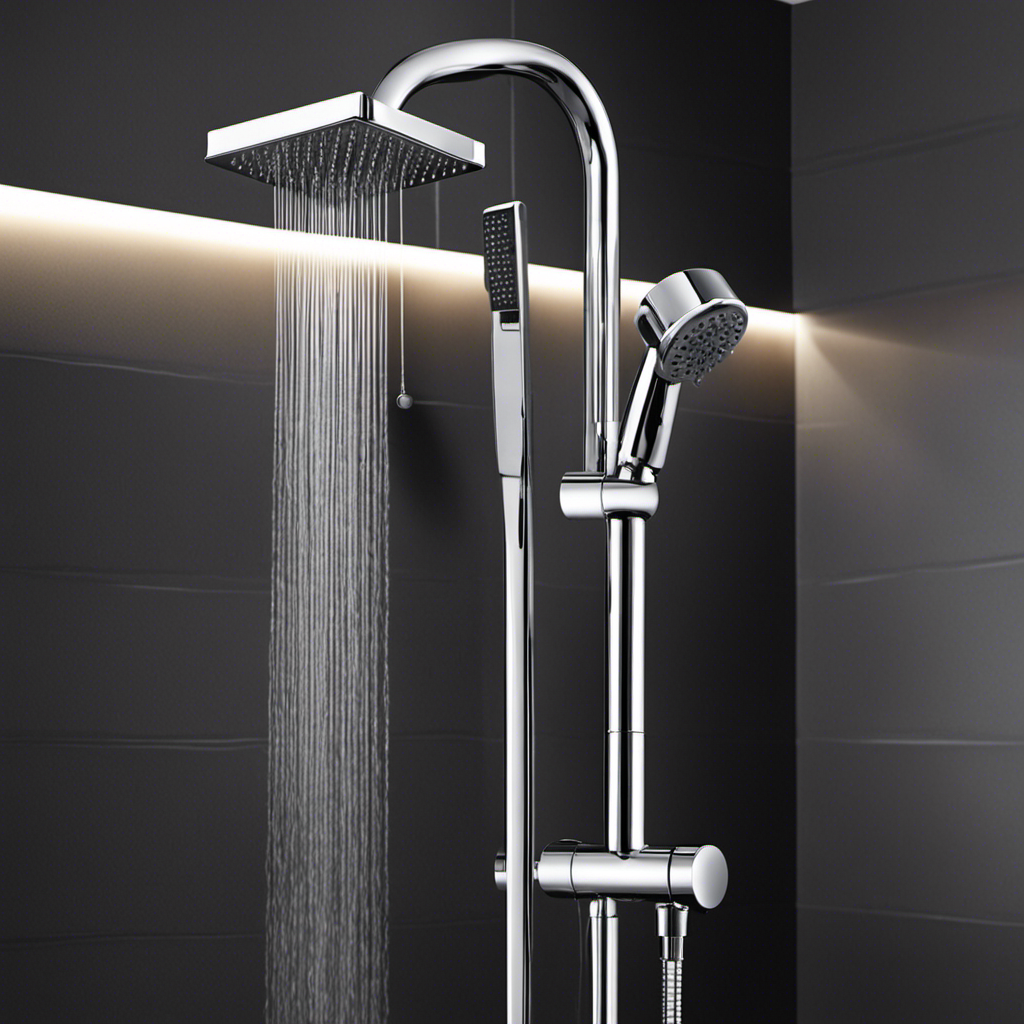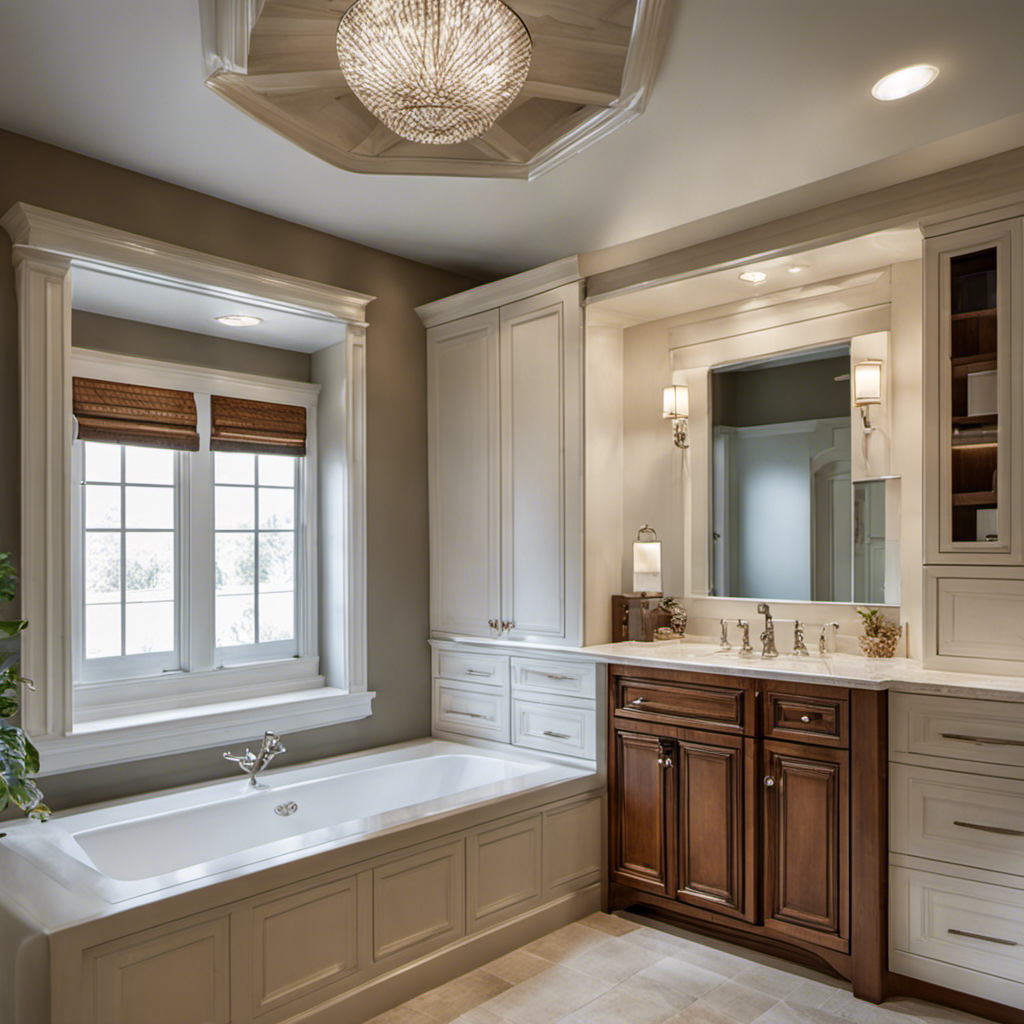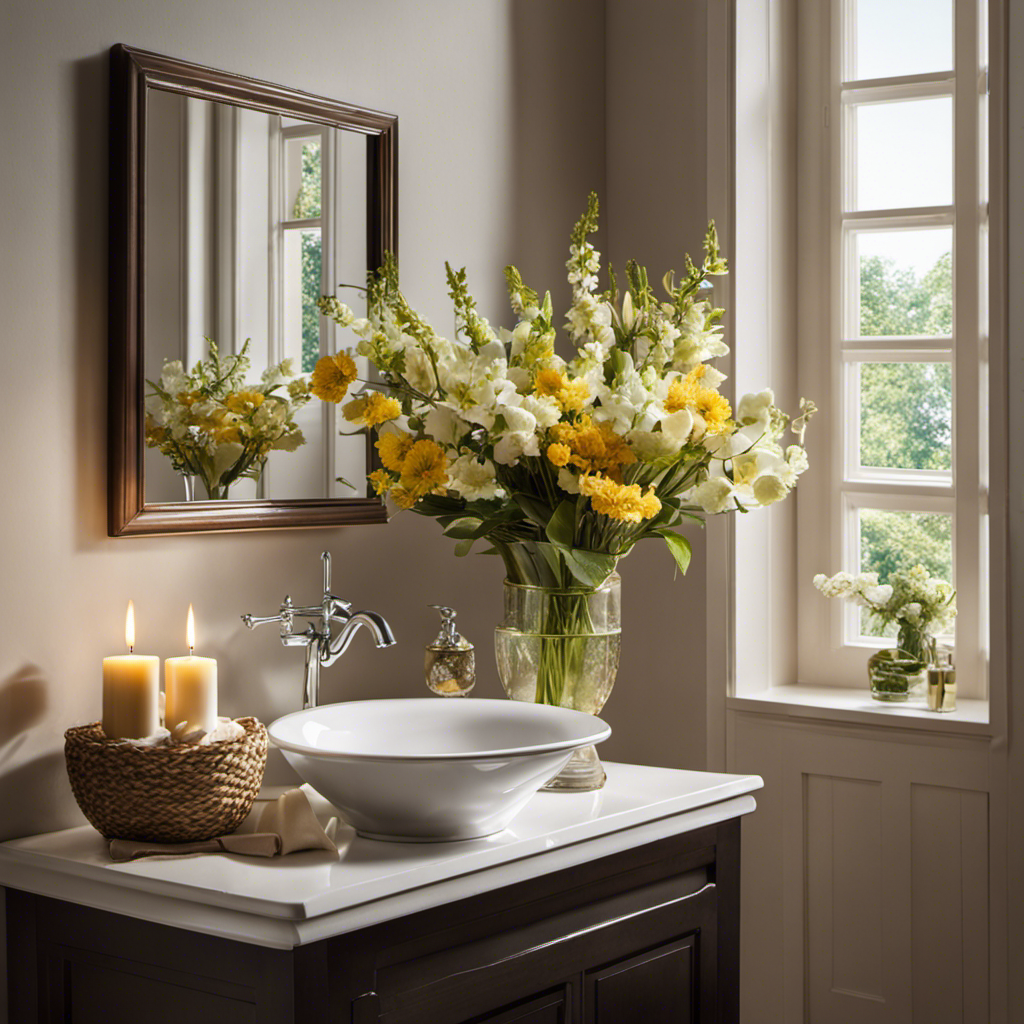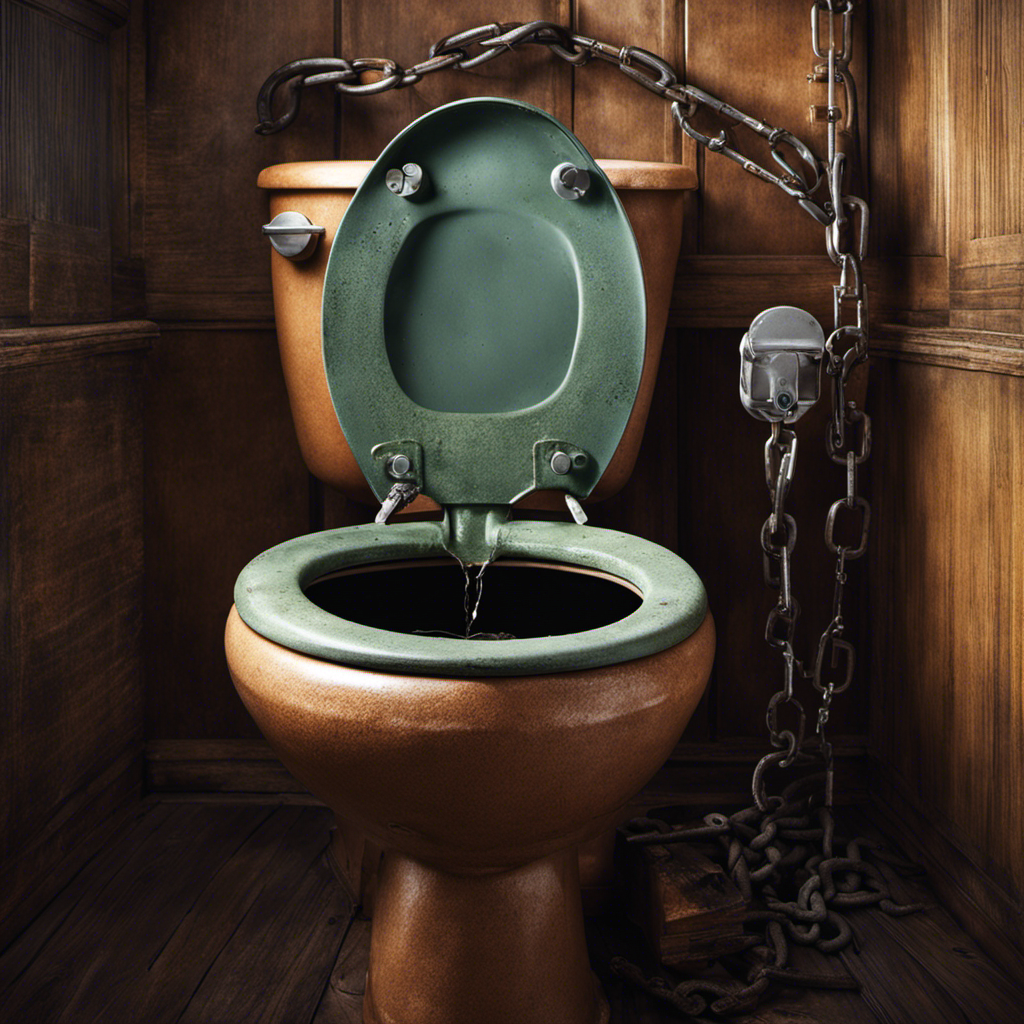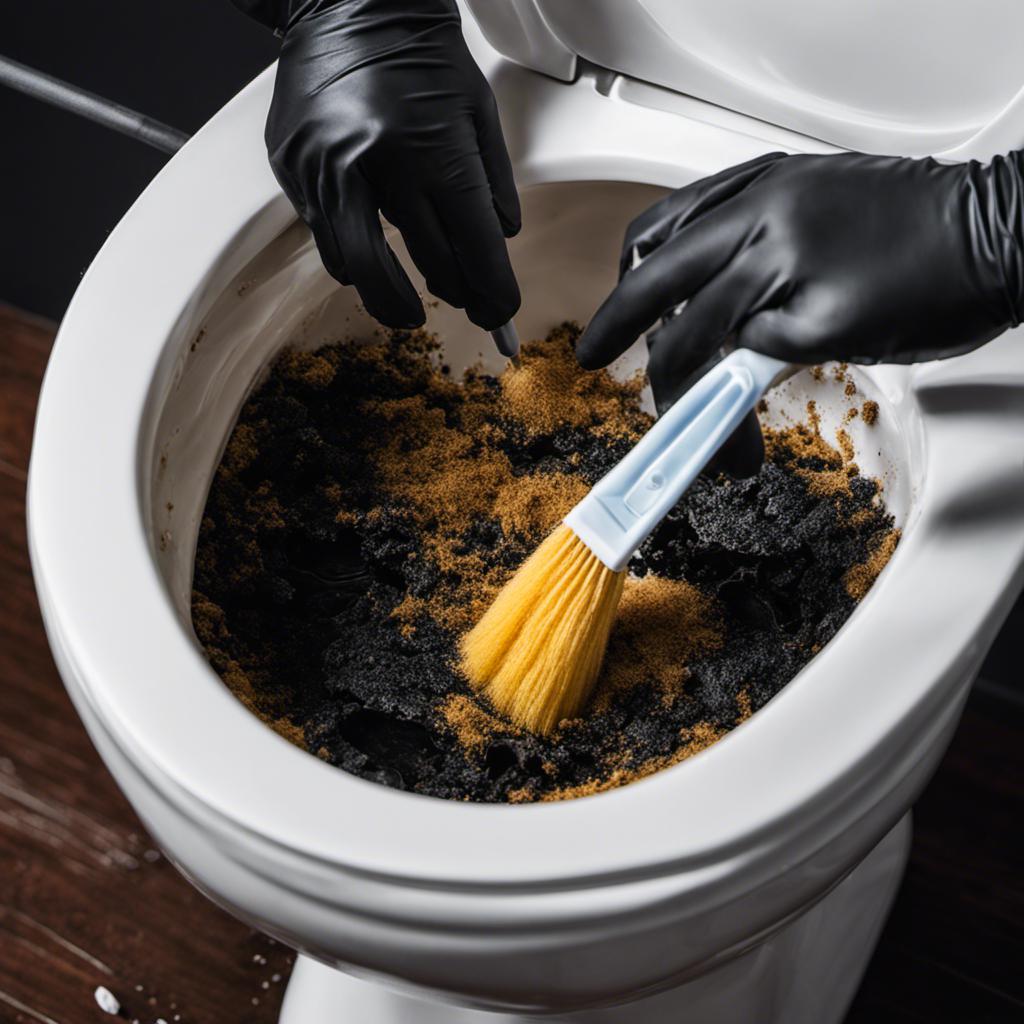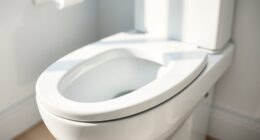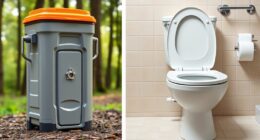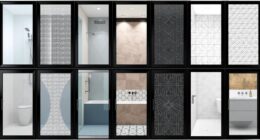When it comes to finding the perfect shower head, compatibility is key. But fear not, because in this article, you’ll discover the ins and outs of shower head compatibility and get some handy tips along the way.
From standard shower heads to unconventional options like rainfall showerheads and shower panels, we’ve got you covered. And don’t worry if you have an older home with non-standard shower arm sizes – we’ll show you how to make it work.
So sit back, relax, and get ready to find the perfect shower head for your bathroom oasis.
Key Takeaways
- Shower heads are generally universal and can be used with a 1/2-inch NPT shower arm, regardless of the size or country of purchase.
- Older homes may have non-standard shower arm sizes, but adapters can be used to transition to a standard 1/2-inch arm and accommodate any shower head.
- Unconventional shower heads, such as those with built-in filters or designed for low water pressure, can still fit onto a standard 1/2-inch NPT shower arm.
- Handheld shower heads are designed to fit 1/2-inch NPT standards, and adapters can be used to accommodate rare cases where 3/4-inch threaded hoses are used.
Standard Shower Head Compatibility
Standard shower heads, which are commonly wall-mounted, fit onto 1/2-inch NPT shower arms and are compatible with most shower systems. This means that homeowners can easily install a standard shower head without worrying about compatibility issues.
However, when it comes to rain shower head installation, there may be some considerations to keep in mind. Rain shower heads can be larger in size, but they can still fit onto a standard 1/2-inch NPT shower arm. It is important to ensure that the shower arm can support the weight of the rain shower head.
Additionally, if you prefer a stronger water flow, you may consider removing the shower head flow restrictor. This can be done by following the manufacturer’s instructions or seeking professional help if needed.
Compatibility Issues With Older Homes
In older homes, the size of the shower arm may not always be 1/2 inches, potentially causing compatibility issues. This can be especially problematic when upgrading to a modern shower head or when trying to use an antique shower head.
Antique shower heads often have unique fittings that may not fit onto standard shower arms. In order to resolve this issue, one option is to upgrade the shower arm to a 1/2-inch size. However, replacing the entire shower arm can be a complex task that may require professional assistance.
Another solution is to use a ball-end shower arm adapter, which allows for the transition from the antiquated arm to a standard 1/2-inch arm. Once the adapter is installed, any shower head sold on the market can be used, ensuring compatibility with both modern and antique shower heads.
Unconventional Shower Head Considerations
Rain shower heads can provide a luxurious and invigorating showering experience. These unique shower head designs, like rainfall shower heads, require special considerations during installation. Despite their large size, rain shower heads can still fit onto a standard 1/2-inch NPT shower arm. However, antique shower heads may not be compatible with modern shower arms.
It is crucial to properly install the shower head to ensure a watertight seal and optimal performance. Additionally, there are other unconventional shower heads available, such as those with built-in filters, dual shower heads, and ones designed for low water pressure. These unconventional shower head systems may require specific installation processes or additional accessories.
When selecting a shower head, consider personal preferences, ease of use, spray settings, and water pressure to enhance your showering experience.
Handheld Shower Head Compatibility
Handheld shower heads are designed to easily attach to 1/2-inch NPT shower arms, ensuring compatibility and convenience for users. These shower heads are universal and follow the standard 1/2-inch NPT size. They are also compatible with shower hoses that send water to various shower accessories.
Typically, these hoses are 1/2-inch in diameter, but there are rare cases where 3/4-inch threaded hoses are used. In such situations, adapters can be used to fit them onto 1/2-inch connections.
When purchasing a handheld shower head, it is important to consider the length of the shower hose. Shower hoses are commonly available in lengths of 59 or 79 inches, but extra-long hoses at 96 and 118 inches are also available.
Overall, upgrading to a new handheld shower head should not cause any compatibility issues, ensuring a hassle-free showering experience.
General Tips for Shower Head Compatibility
When selecting a new shower head, homeowners should consider their personal preferences and needs to ensure a satisfying showering experience. In addition to compatibility with the shower arm, there are other factors to consider, such as shower head maintenance and selecting the right shower hose length.
For shower head maintenance, regular cleaning is essential to remove mineral deposits and maintain optimal water flow. Vinegar can be used to soak the shower head and remove any build-up. Additionally, checking the shower head for any leaks or clogs and replacing any damaged parts can help prolong its lifespan.
When it comes to selecting the right shower hose length, homeowners should consider the distance between the shower head and the water source. Many homeowners opt for shower hoses that are 59 or 79 inches long, but there are also longer options available. It is important to ensure that the hose is long enough to provide adequate flexibility and reach during showering.
By considering these factors, homeowners can ensure that their shower head is properly maintained and that the shower hose length meets their specific needs for a satisfying showering experience.
| Shower Head Maintenance | Selecting the Right Shower Hose Length |
|---|---|
| Regular cleaning | Consider distance between shower head and water source |
| Remove mineral deposits | Opt for 59 or 79 inch hoses |
| Check for leaks and clogs | Longer options available |
| Replace damaged parts | Ensure adequate flexibility and reach |
Proper Installation for Watertight Seal
To ensure a watertight seal, homeowners must properly install their shower head by following the manufacturer’s instructions. Waterproofing techniques are crucial in preventing leaks and ensuring the longevity of the shower head.
Common installation mistakes can lead to water seepage and damage to the surrounding areas. One common mistake is improper sealing of the shower head connection. This can be avoided by using plumber’s tape or thread sealant to create a tight seal.
Another mistake is overtightening the shower head, which can lead to cracked fittings or stripped threads. It is important to tighten the shower head just enough to prevent leaks without causing damage.
Additionally, ensuring that the shower arm is clean and free from debris before installation is essential.
Seeking Professional Help for Installation Issues
After discussing the proper installation for a watertight seal, it is important to address the potential challenges that may arise during the installation process.
If homeowners encounter any difficulties or have concerns about installing a shower head, seeking professional assistance is recommended. Professional plumbers or bathroom remodelers have the expertise and experience to troubleshoot installation problems effectively.
They can identify and resolve issues such as incompatible shower arm sizes, damaged or outdated plumbing, or any other complications that may arise during the installation process. By relying on professionals, homeowners can ensure that their shower head is installed correctly and efficiently, avoiding any potential leaks or malfunctions.
Seeking professional help for installation issues provides peace of mind and guarantees a successful installation of the shower head.
Frequently Asked Questions
Can a Shower Head Purchased Overseas Fit Onto a Shower Arm in the United States?
Yes, a shower head purchased overseas can fit onto a shower arm in the United States. Despite different terminology, the pipe size or diameter remains the same, making the fittings compatible. Proper installation is essential for a watertight seal.
Are Shower Heads With Built-In Filters Compatible With Standard 1/2-Inch NPT Shower Arms?
Shower heads with built-in filters are compatible with standard 1/2-inch NPT shower arms. The built-in filters provide additional benefits by removing impurities from the water, ensuring a cleaner and healthier shower experience.
Do Antique Shower Heads Fit Onto Modern Shower Arms?
Antique shower heads may not fit modern shower arms due to differences in sizing and compatibility. However, with antique shower head restoration, the benefits of modern shower arm technology can be enjoyed while preserving the vintage aesthetic.
What Is the Average Cost of Replacing a Shower Arm?
The average cost of replacing a shower arm varies depending on location and complexity. Homeowners can expect to pay between $100 to $250 for labor and a new shower arm. DIY installation is possible with a few tools and takes less than 5 minutes.
Are There Shower Hoses Available in Lengths Longer Than 79 Inches?
Yes, there are shower hoses available in lengths longer than 79 inches. Using a longer shower hose provides increased flexibility and reach, allowing for easier maneuverability and a more comfortable shower experience.
Conclusion
In conclusion, ensuring shower head compatibility is crucial for a successful installation. Most shower heads can be easily fitted onto the shower arm with the standard 1/2-inch NPT size widely used. However, compatibility issues may arise in older homes with non-standard sizes, requiring the use of adapters.
It is also important to consider special considerations for unconventional shower heads like rainfall showerheads or shower panels. These types of shower heads may have unique installation requirements or may require additional hardware for proper installation.
Regular maintenance is essential for maintaining a watertight seal and preventing leaks. It is important to regularly check for any signs of wear or damage and to replace any worn-out parts as needed. Seeking professional help when needed can also ensure that the installation is done correctly and that any issues are addressed promptly.
Interesting statistic: Did you know that approximately 70% of homes in the United States have shower heads with the standard 1/2-inch NPT size?
